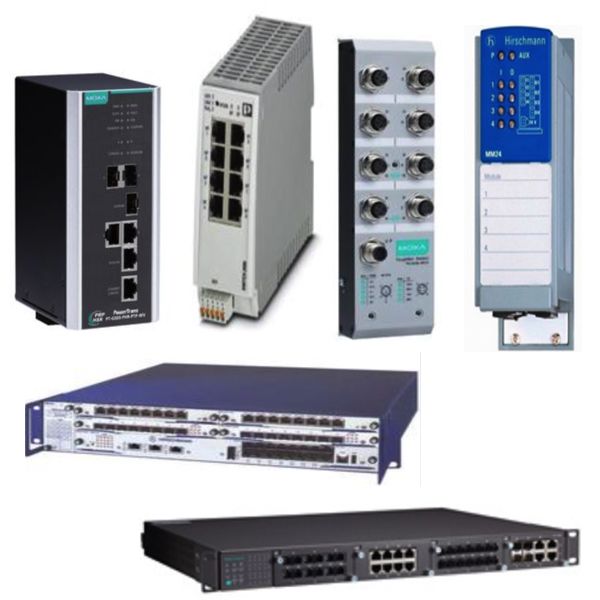Ethernet Switches

Ethernet switches are essential components in wired network infrastructures, responsible for connecting multiple devices and directing data traffic to its intended destination. By receiving data packets from connected devices and intelligently forwarding them to the correct endpoints, Ethernet switches help ensure stable, efficient, and reliable network communication across a wide range of applications.
RSP Supply offers both managed and unmanaged Ethernet switches to support different network requirements. Managed switches provide advanced configuration capabilities such as VLAN support, traffic prioritization, and network monitoring, making them suitable for larger or more complex networks where control and visibility are critical. Unmanaged switches offer simple, plug-and-play connectivity with minimal setup, ideal for smaller networks or applications where basic device interconnection is sufficient.
Power over Ethernet (PoE) switches extend functionality by delivering both data and power through standard Ethernet cabling. This allows devices such as wireless access points, security cameras, and IoT equipment to be installed without the need for separate power sources. PoE switches are commonly used in environments where power availability is limited or where simplified installation and cable management are required.
FAQs
Q: What is an Ethernet switch used for?
An Ethernet switch connects multiple devices within a wired network and directs data traffic so that information is delivered only to the intended device, improving network efficiency and performance.
Q: What is the difference between managed and unmanaged Ethernet switches?
Managed switches allow for advanced configuration, monitoring, and traffic control features such as VLANs and network diagnostics. Unmanaged switches offer basic connectivity with little to no configuration and are typically used in simpler network setups.
Q: What is a PoE Ethernet switch?
A PoE Ethernet switch supplies power and data over the same Ethernet cable, eliminating the need for separate power wiring for connected devices such as cameras, access points, and sensors.
Q: How are wireless access points used in an Ethernet network?
Wireless access points connect to an Ethernet switch and extend the wired network by providing wireless connectivity, allowing Wi-Fi-enabled devices to communicate with wired network devices.
Q: Can Ethernet switches be used in industrial environments?
Yes, many Ethernet switches are designed for industrial applications and offer features such as rugged housings, extended temperature ranges, and enhanced reliability for demanding environments.
Why Buy Ethernet Switches from RSP Supply
RSP Supply provides a broad selection of Ethernet switches suitable for industrial, commercial, and office networking applications. Our offerings include managed, unmanaged, and PoE switches from trusted manufacturers, supporting reliable data transmission and scalable network design. Customers rely on RSP Supply for consistent product availability, technical expertise, and dependable networking components that meet the demands of modern wired networks.

